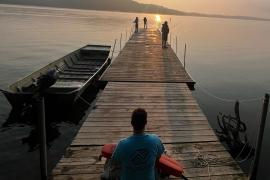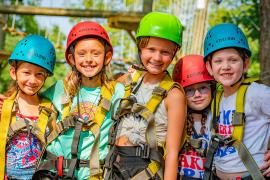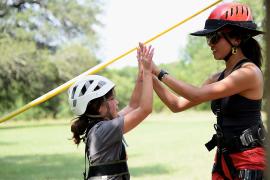Unconstrained from daily life, camp is a space for exploration and expression. Whether through planned activities or social-emotional learning, participants learn new things each day and develop in their identity through time spent at camps. To better cultivate this environment — one where everyone is welcome and encouraged to be themselves — camp leaders should work to integrate more inclusive practices and programming. Inclusion, like every facet of DE&I work, is a broad and often complicated subject, and there will never be a comprehensive checklist. Nevertheless, the suggestions below provide a framework for how to evaluate your camp and improve on policies for building an inclusive camp environment for participants and staff.
Be Clear on Your Values and Expectations
Before anyone arrives at camp, they need to have a firm understanding of your camp’s values and expectations relating to inclusion. If you don’t already have one, work with your stakeholders to develop a value statement that lives on your camp website and can be shared through social media and other distributed content. This statement should highlight your camp’s commitment to inclusion and the tangible actions taken to integrate it into camp policies and programming. Policies such as an anti-bullying statement for campers, anti-harassment Human Resources documents for faculty and staff, and a nondiscrimination policy should also be accessible on the website and signed before your camp begins. Having clear and easy-to-find resources can ease concerns from parents and prospective staff who are curious if your camp will be a safe space for their kids or themselves. Likewise, it can even encourage a more diverse group of staffers and campers to register. In contrast, camps without value statements and comprehensive policies may see decreased camp registration and job applications, especially from Gen Z, who have shown they highly value diversity and inclusion.
Think about Your Program Holistically
Without looking at programs holistically, camp leaders might try to solve inclusion issues on a case-by-case basis, failing to address all issues at hand and leaving problems on the table. Fixing problems in this "whack-a-mole” way inevitably takes more time, effort and resources than evaluating your camp’s status on a broader level. For example, imagine investing thousands of dollars into a brand-new swimming pool hoist chair, only to realize the path down to the swimming pool isn’t wheelchair accessible. Or having staffers go through a comprehensive inclusion training to understand pronoun use, only to have a binary choice for gender on the registration website. Problems like these often happen when leadership feels pressure from stakeholders on a trending issue or when a camp enforces last-minute policy changes to adapt to a new situation. Being proactive and comprehensive when implementing change helps develop meaningful and thoughtful practices.
Go Above and Beyond Standards
Just because a camp meets all legal requirements, such as ADA compliance, doesn’t necessarily mean the camp is implementing best practices to create an inclusive environment. These rules often solve technical problems but still leave those in need of accommodations feeling isolated or wondering if they’re seen as a burden. For example, imagine how a staff member might respond to hearing a kitchen staffer complain about preparing halal food. Or how lonely a child may be if they have to sit away from the group because they need a wheelchair-accessible seat. Or how ostracized a trans or nonbinary camper might feel if they are asked to bunk by themselves, rather than being with their friends. You’ll notice all these examples “check the boxes” of providing accessible options but can still cause harm and send a message of exclusion to members of the community. Instead of simply marking off a checklist, try to see policies through the eyes of the people they impact. Ask questions and approach accommodations as opportunities, rather than burdens.
Involve Your Community
At the end of the day, every camp is unique and only you and your community know what inclusive practices should be implemented to make your camp the best place for everyone. If you’re looking to review your policies and programming, include a diverse group of people who can speak to all aspects of the process. Take ideas from staff members, campers, parents, alumni, and other vendors to understand their experiences and potential concerns. Set aside time to align on the vision for your program and then vocalize the values that make your camp special. After that, you can use these differentiators to identify points of growth and find the tools needed to enact positive change.
Being intentional about inclusion is a continual process. It might be tempting to put these goals on the backburner when things are busy or after making a few changes. However, following through on plans to make your camp more inclusive is rewarding and worth advocating for. Not only will it solve problems for existing community members, but it will also create opportunity to bring a new, diverse class of participants to your program and welcome more smiling faces to camp each year.
This blog is sponsored by ACTIVE Network. For more details on understanding gender inclusivity and how ACTIVE responds to this need, you can check out their blog.
Periodically, the American Camp Association (ACA) makes timely and relevant information about products and services available to its members so they can make informed decisions for their camps. However, the ACA does not endorse products, services, or companies.
The views and opinions expressed by contributors are their own and do not necessarily reflect the views of the American Camp Association or ACA employees.




